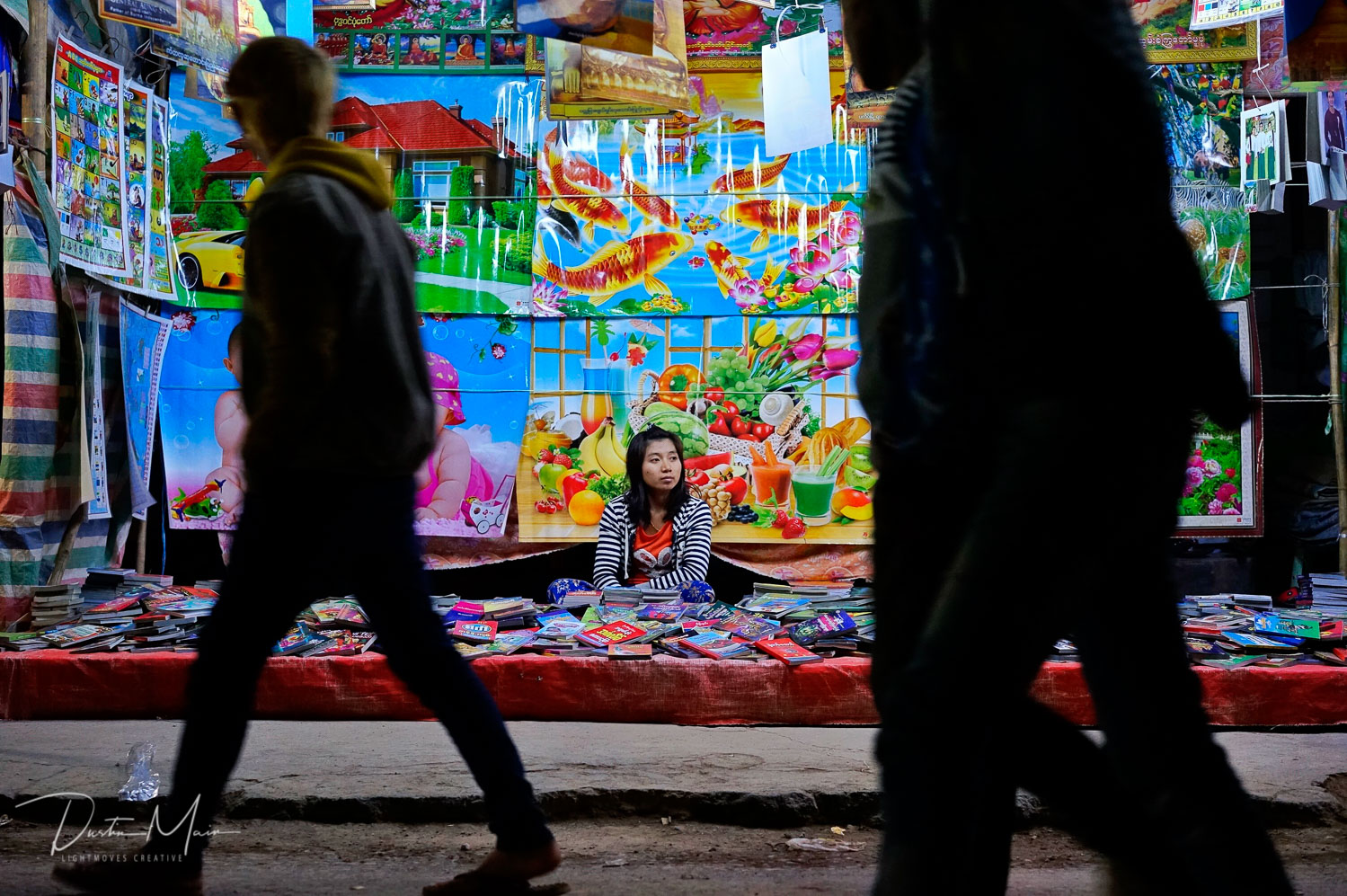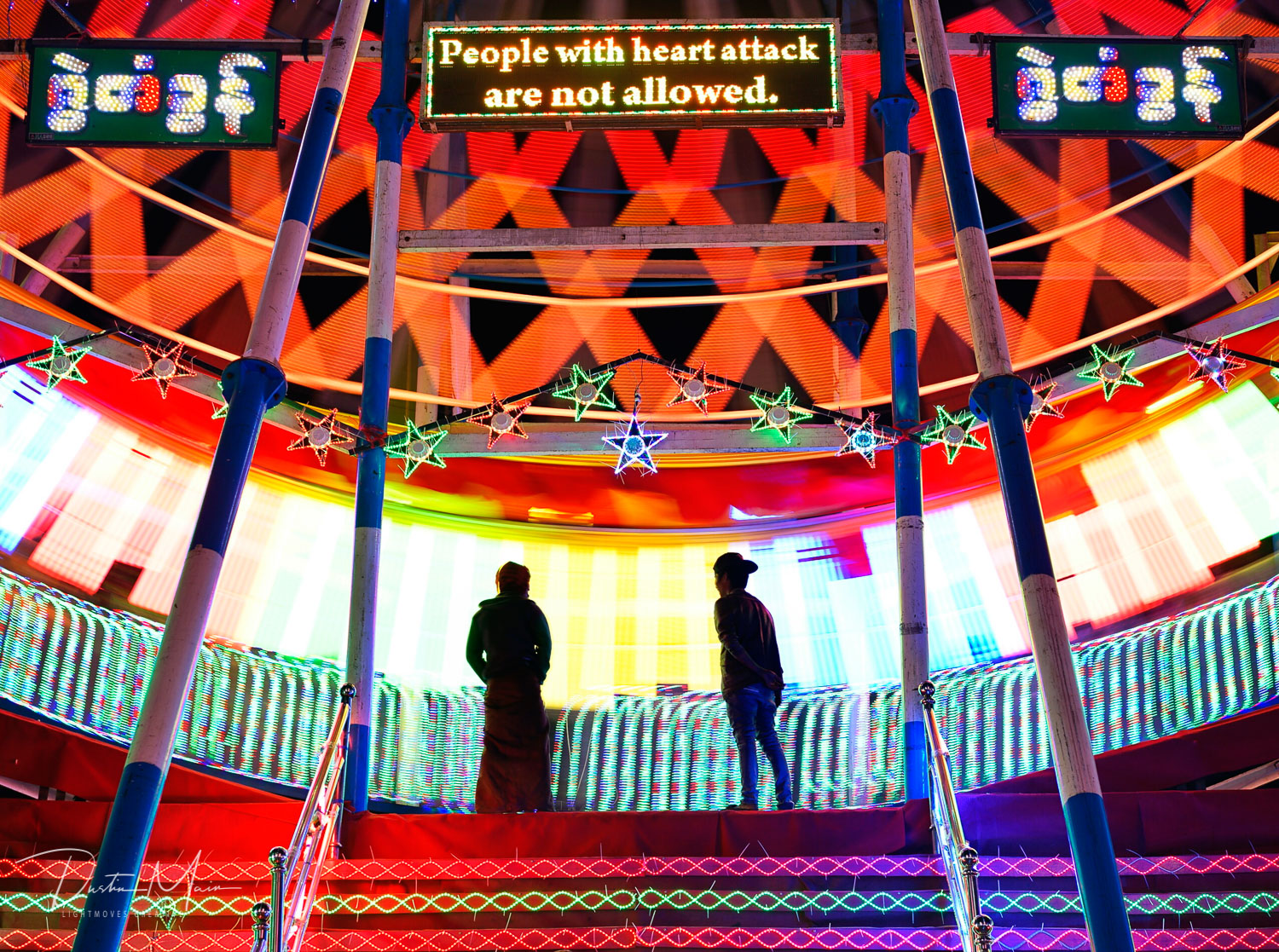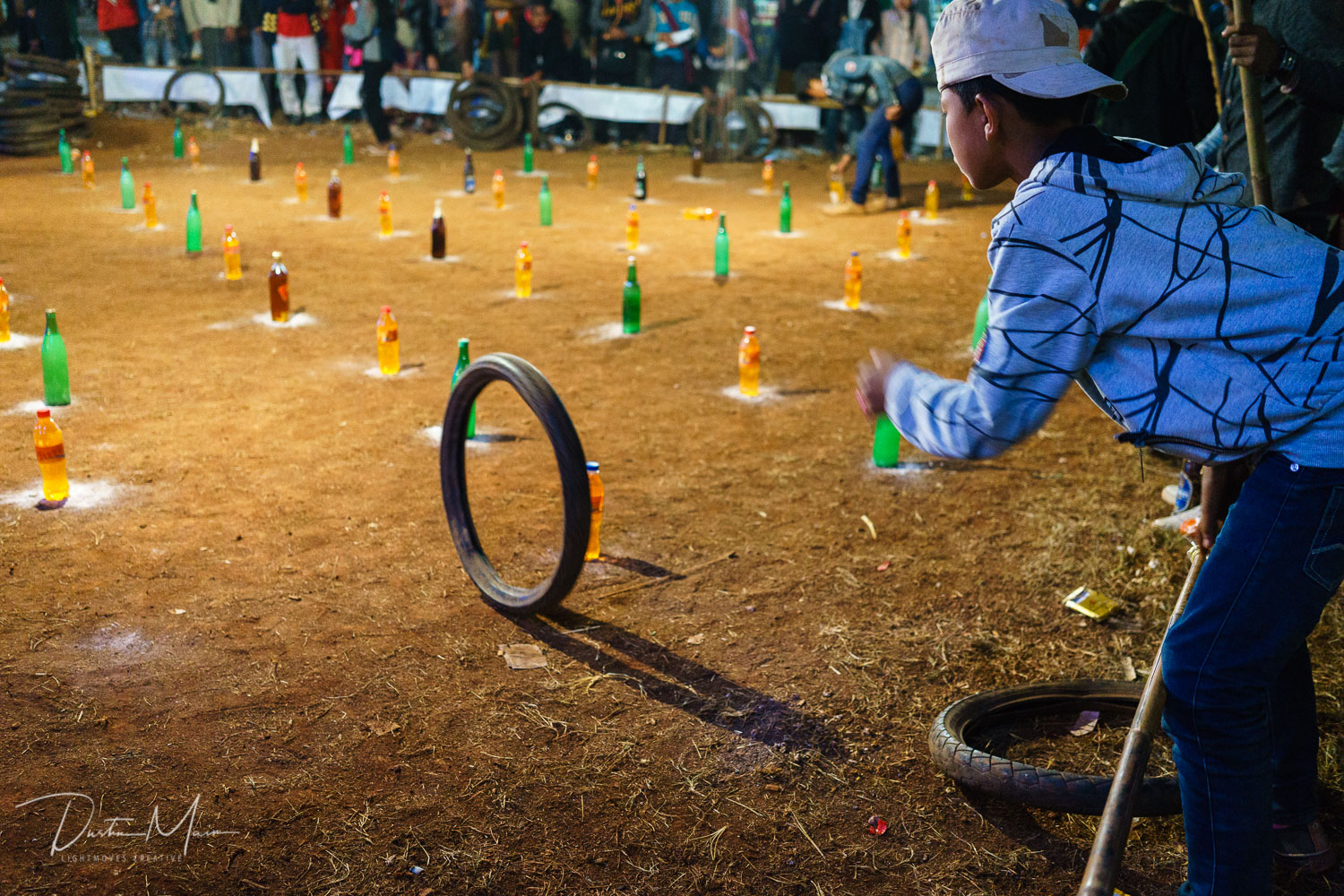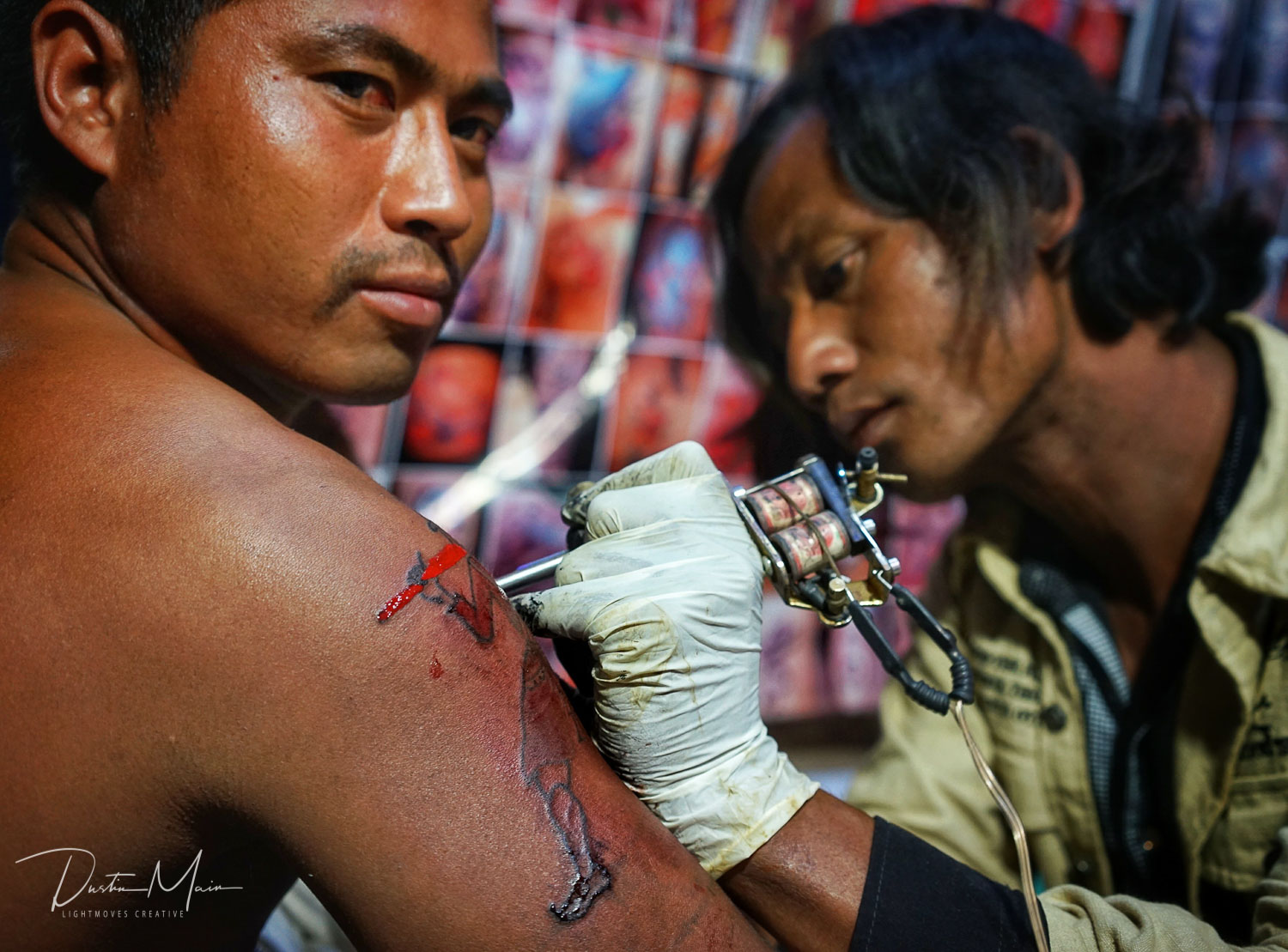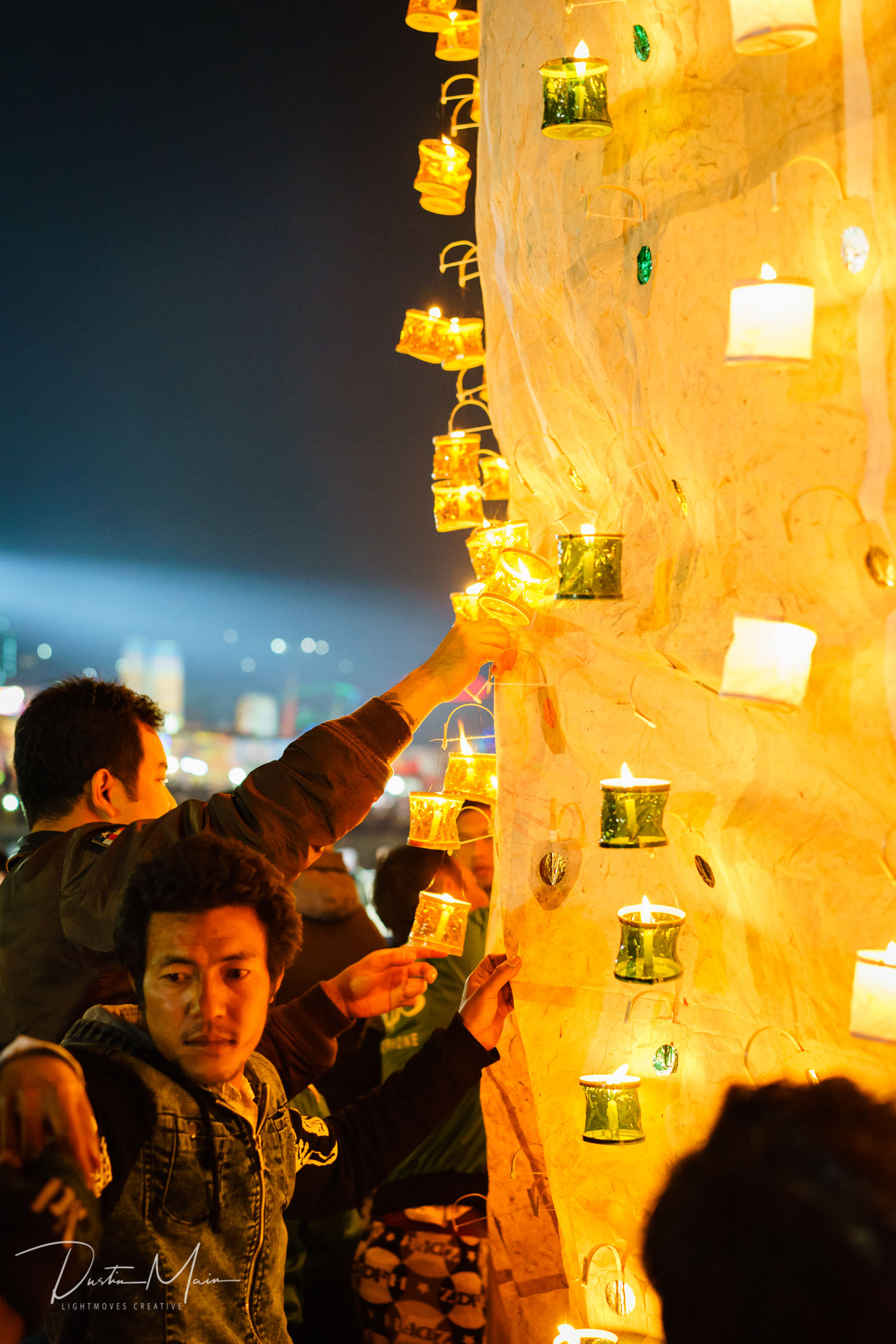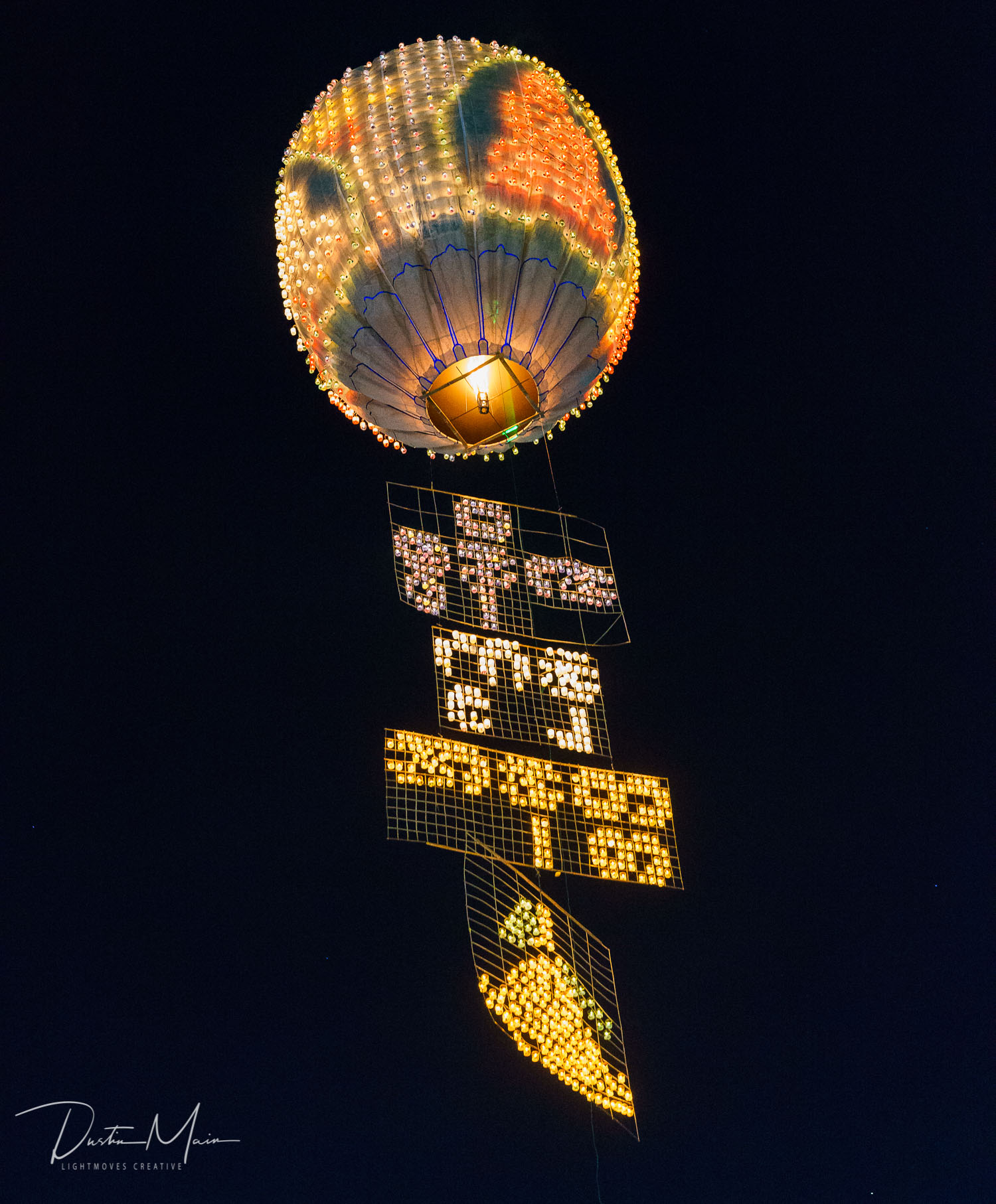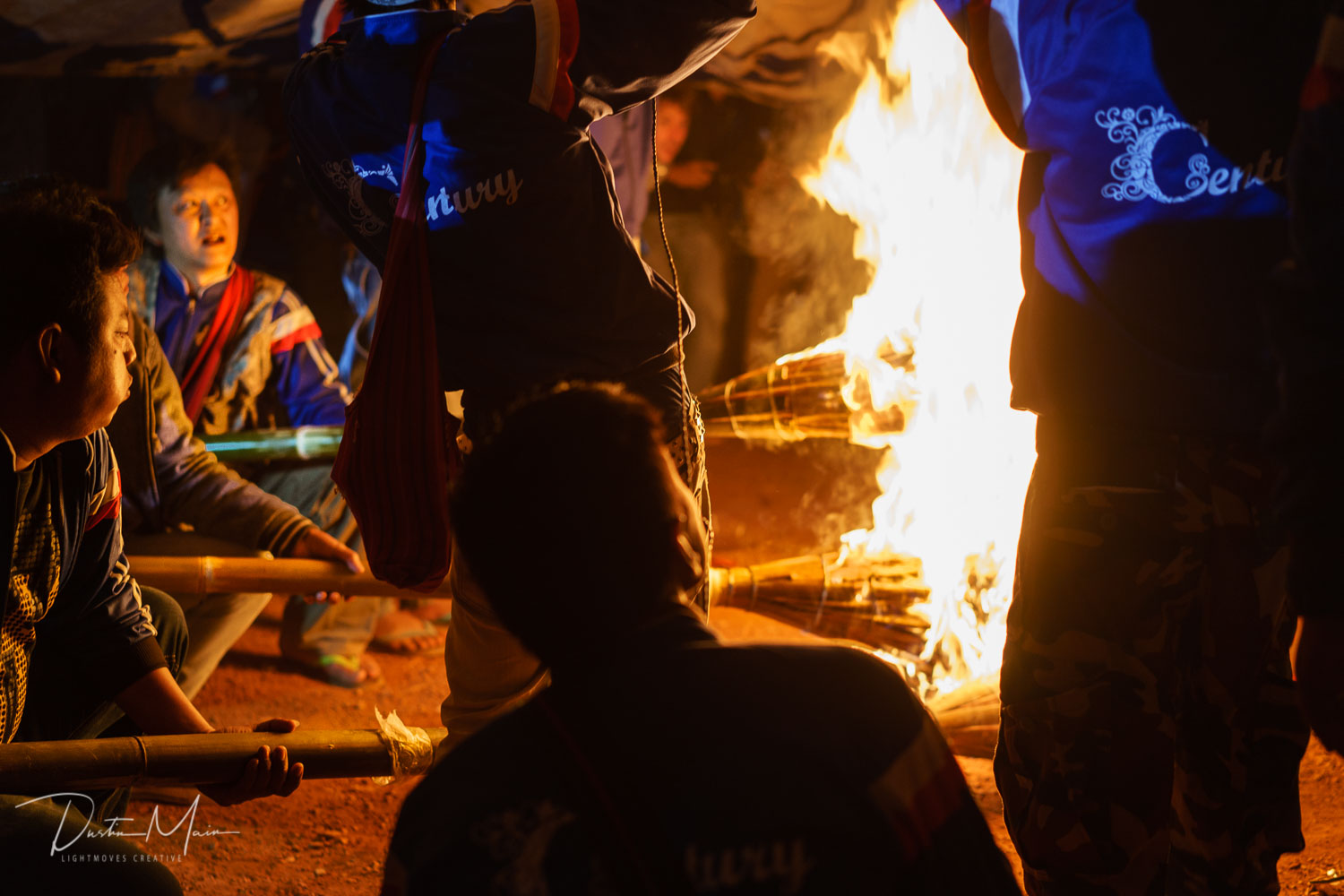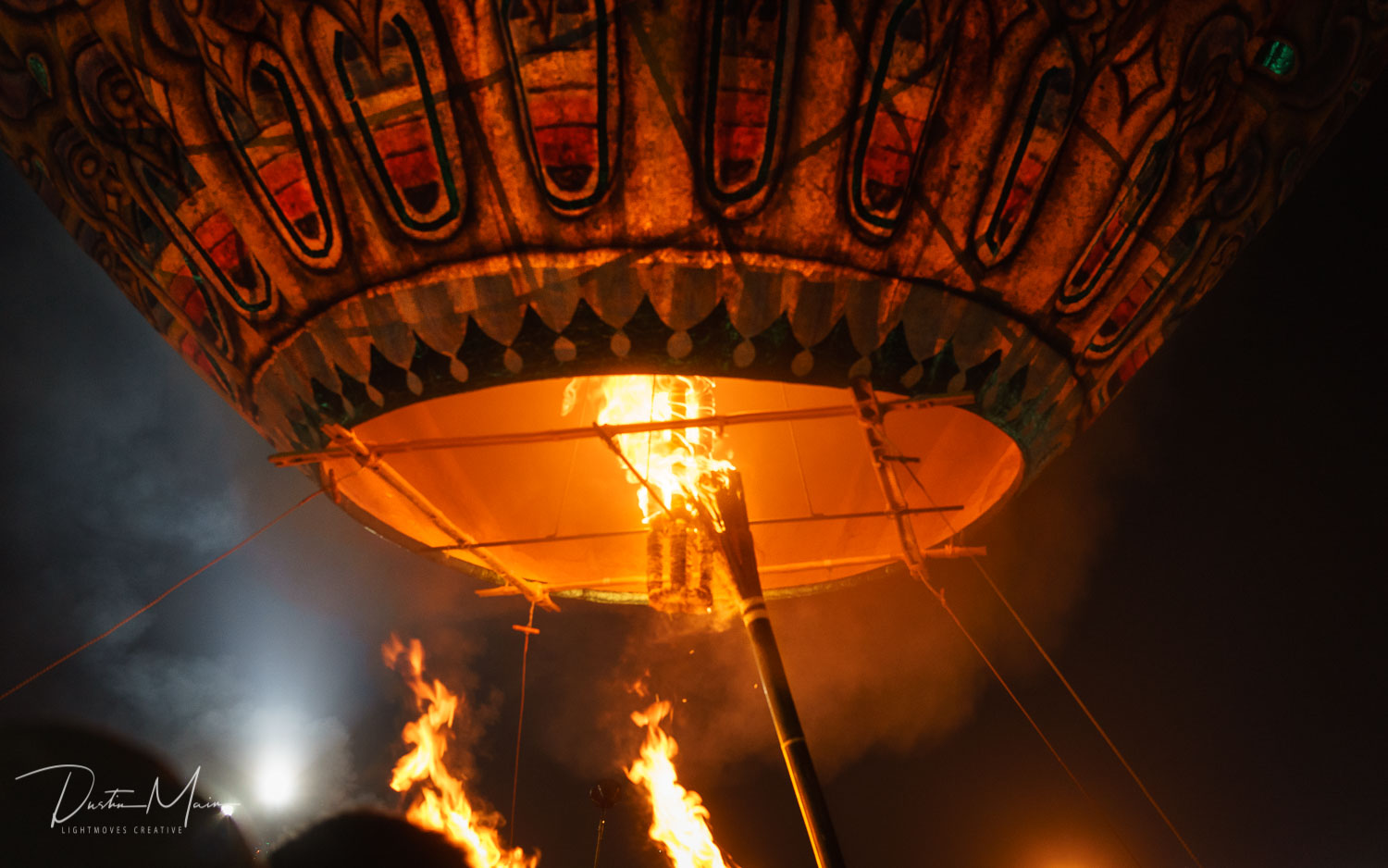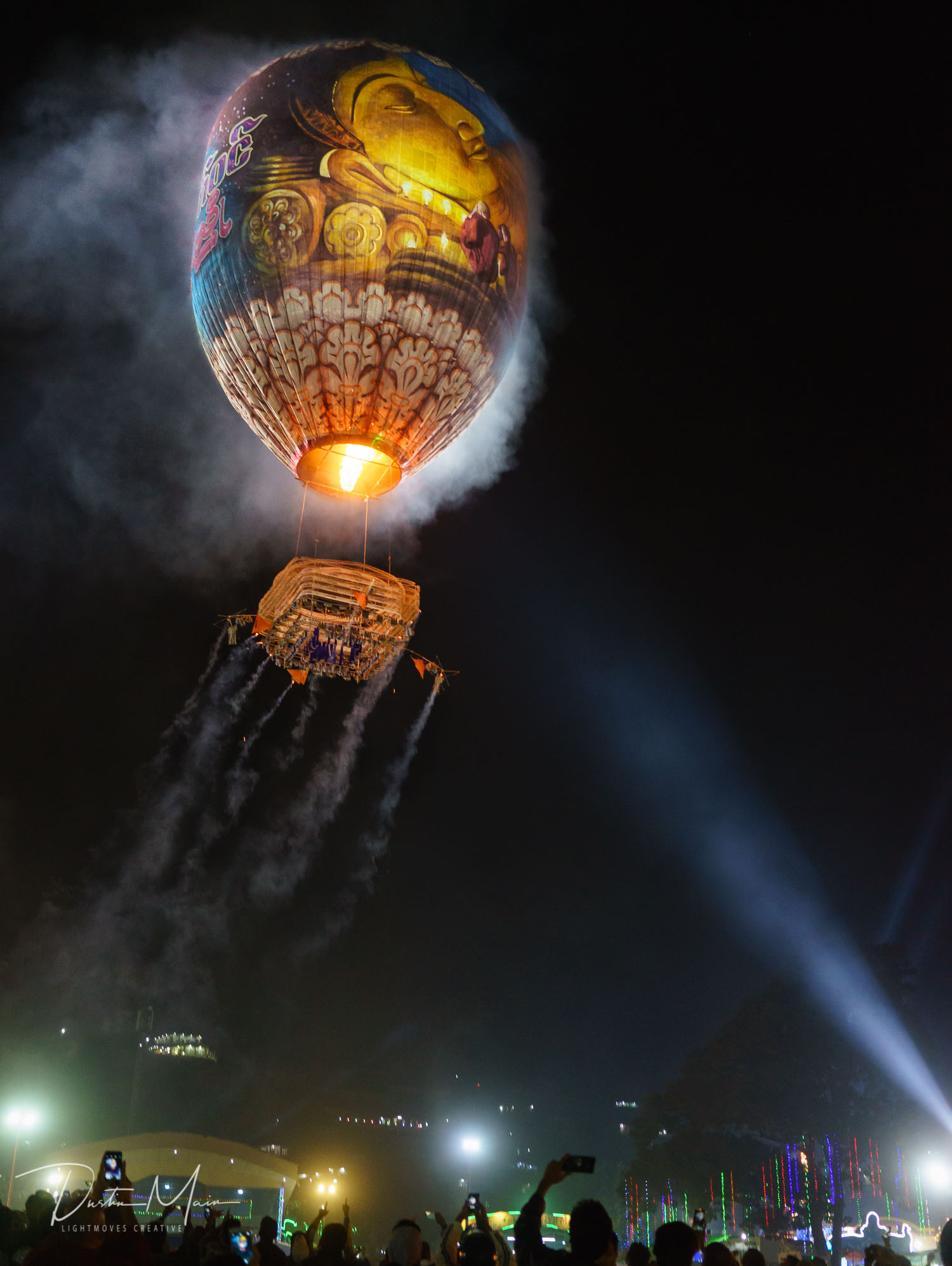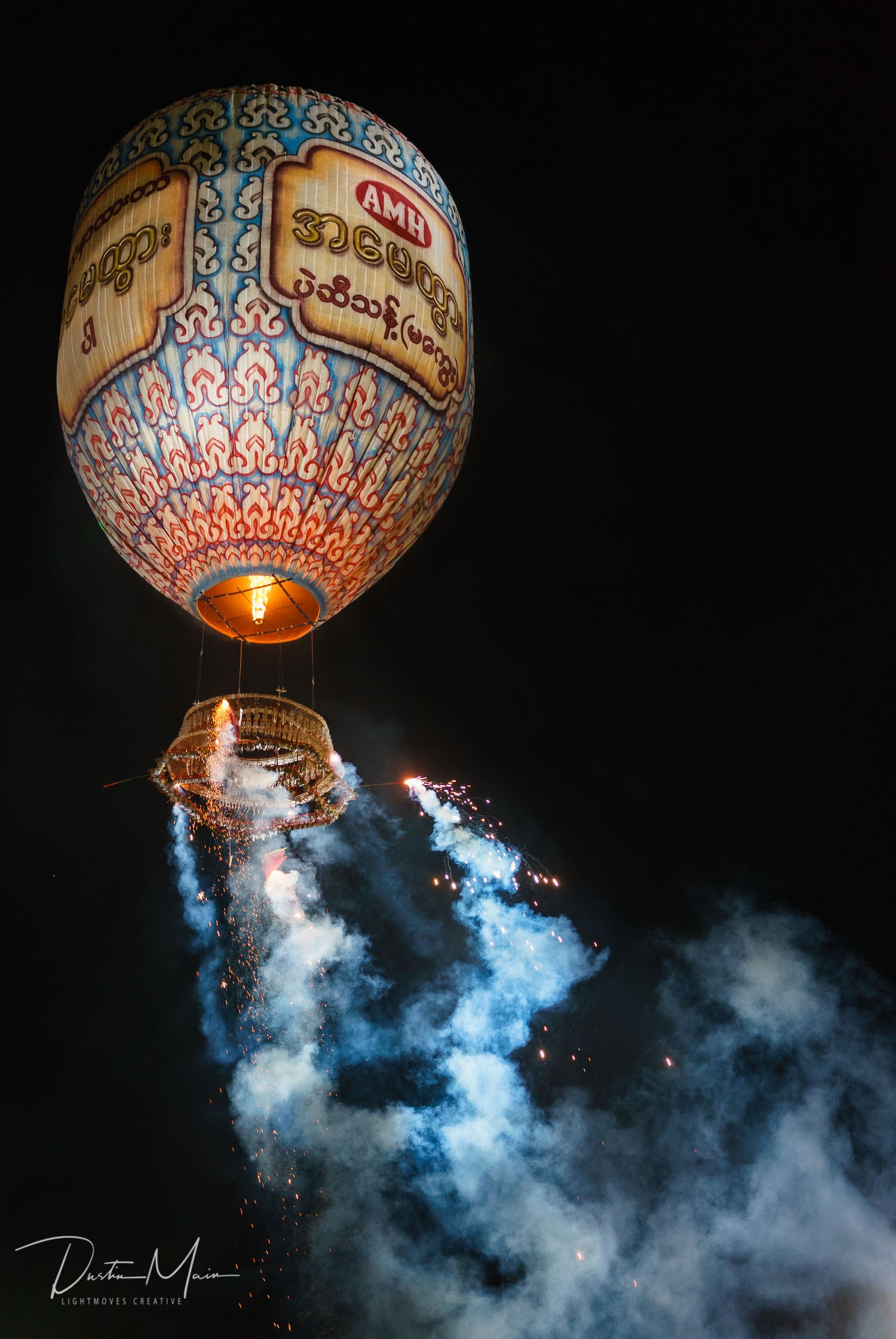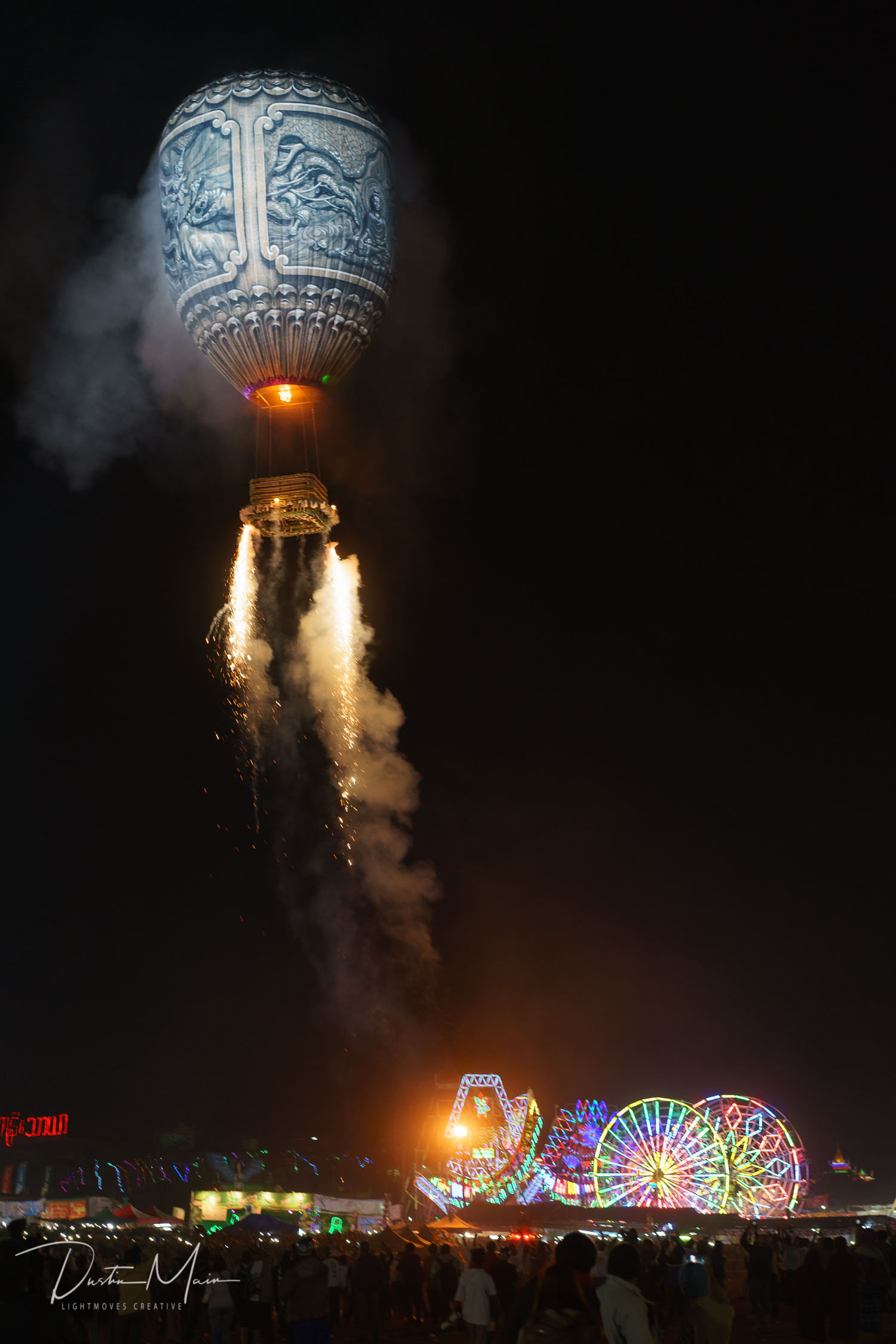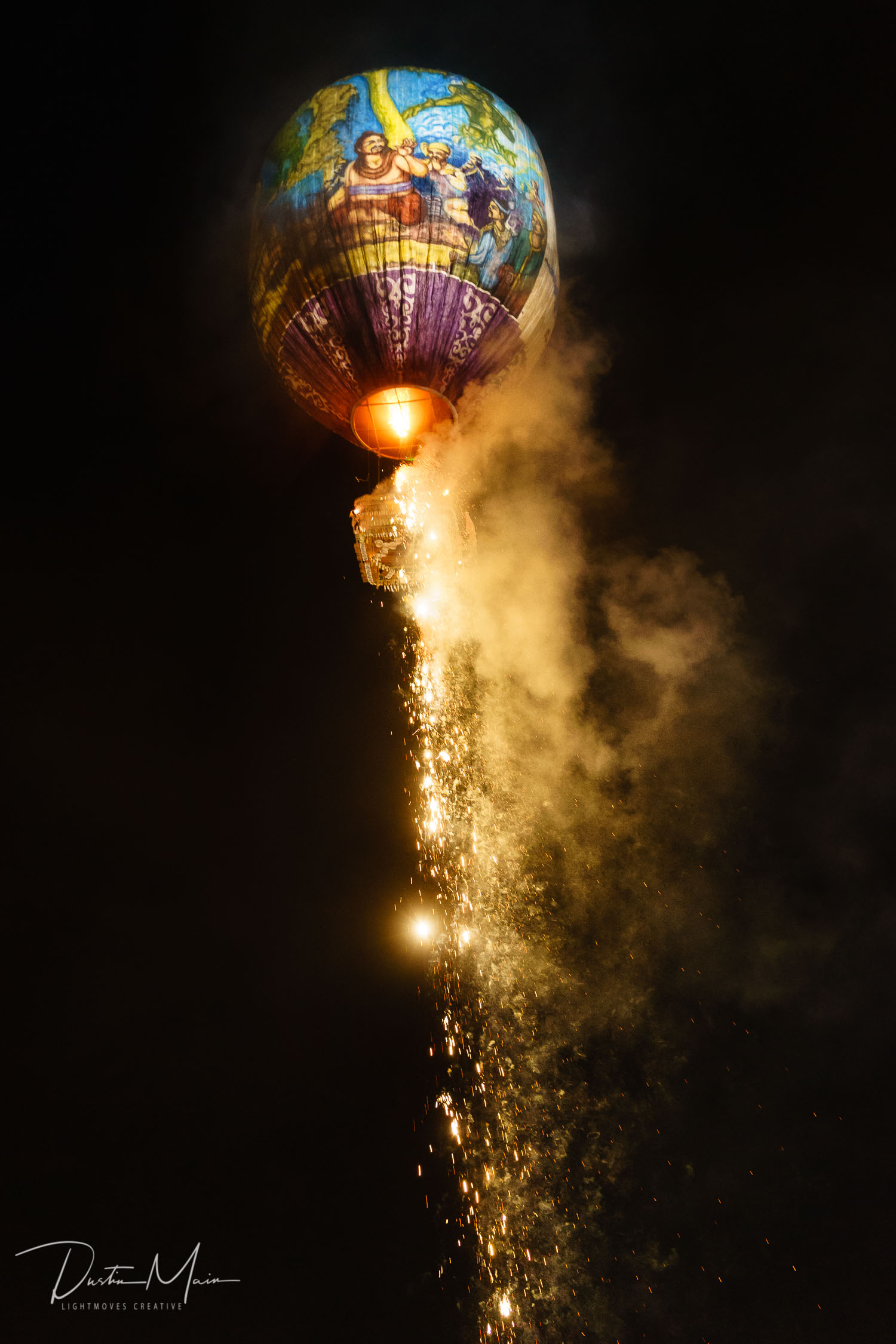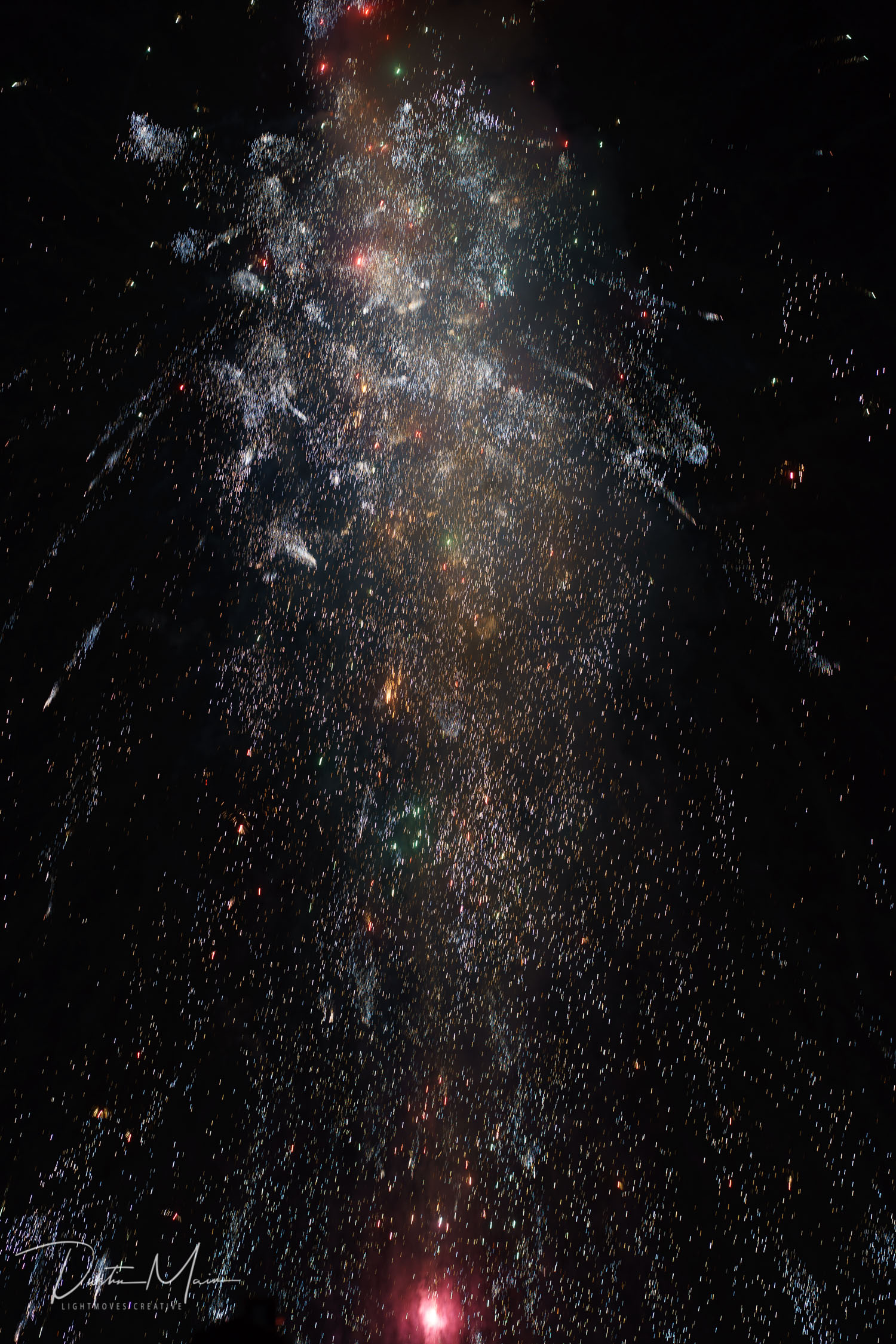Fire In the Sky: Tazaungdaing Fire Balloon Festival in Taunggyi
I remember watching the Fire Balloon festivities in Taunggyi on TV on one of my early trips to Myanmar. The family I was with had their eyes glued to the screen, with the cameras zoomed in on the massive 30ft tall balloons filled with hot air lift into the black of the night sky. With a laugh, the mother looked over to me and told me with a laugh, "Fun when I was young, but now it's too scary!"
Based on that, I didn't go myself until several years later. I know what driving in Myanmar is like (often crazy), so I took the advice that nearly every adult in Myanmar had given me, to stay away.
Eventually I went to see it for myself... and since then I've been to the Fire Balloon Festival in Taunggyi more than a dozen times.
Yep, it's that incredible.
About the Fire Balloon Festival
The Tazaungdaing Lights Festival is a (roughly) yearly event typically happening in October or November leading up to the full moon in the month of Tazaungmon on the lunar calendar. It helps celebrate the end of the rainy season as the transition to the cooler and drier winter will follow. Oh, and there are fireworks, explosions, and human-powered ferris wheels too.
My earliest experience with this celebration was the related Yi Peng festival in Northern Thailand, where small white paper lanterns are lit from below and let float gracefully into the air. I remember that experience with awe, watching the orange glow of hundreds of these slowly take off from all around. Leave it to the people of Myanmar to take it up a notch (or 10).
The Tazaungdaing Lights Festival is at it's largest in the city of Taunggyi nestled in the mountains of Shan State. It's here that the celebrations and competitions for the Fire Balloons last more than a week in a field near the university, just outside the city. Daytime activities include all-day weaving competitions and animal-shaped balloons called "Ayoke" being launched into the sky, but it's the night time festivities that are the most noteworthy.
The festival grounds attract huge crowds, and the grounds are pretty massive... enough to hold tens of thousands of people. In fact, it is the second largest in all of Myanmar, sitting only behind the Water Festival in April that essentially shuts the country down for a week or so. They host all sorts of fun activities besides the fire balloons, including a fair grounds with rides like the human-powered Ferris Wheel, carnival games like "Rolling the Bicycle Tire" (my favorite), and more food options than you can possibly need. You can even get yourself a tattoo (not recommended).
While at first glance, you may think that the 9m tall fire balloons are just for fun, they are actually part of a competition. The teams are often centered around communities (called quarters) of a town or a village, where dozens of people get together to prepare for the event months in advance. Around 300 balloons participate in the week-long event.
The fire balloons are made of paper, and designed and constructed by the participants themselves. The candles, painting and even the fireworks are all made by hand. It's an expensive affair, often costing thousands and thousands of dollars ($3000-$10000 each), some of which is raised by the community and the rest by sponsorship by corporations.
Picturing The Walk Out
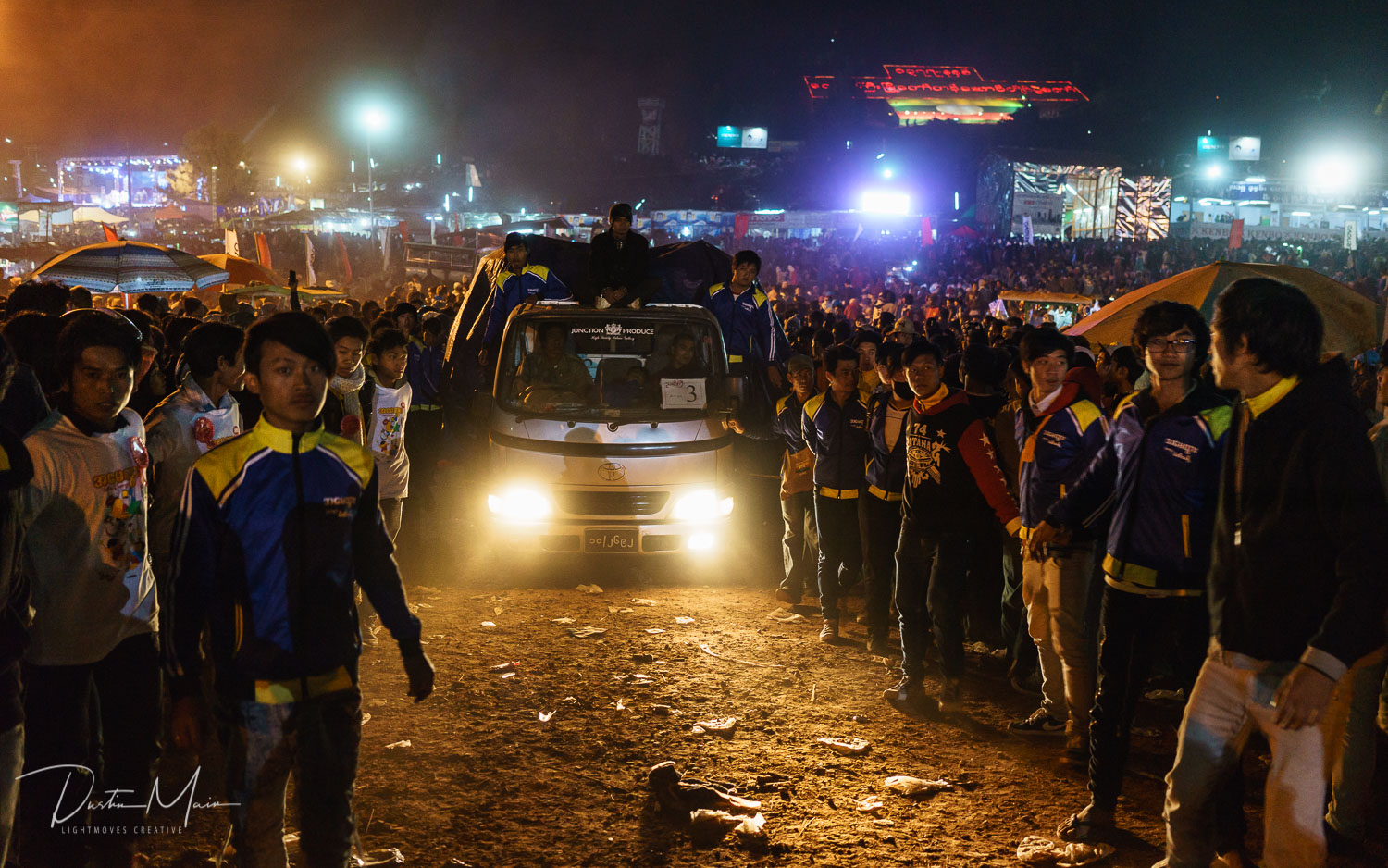

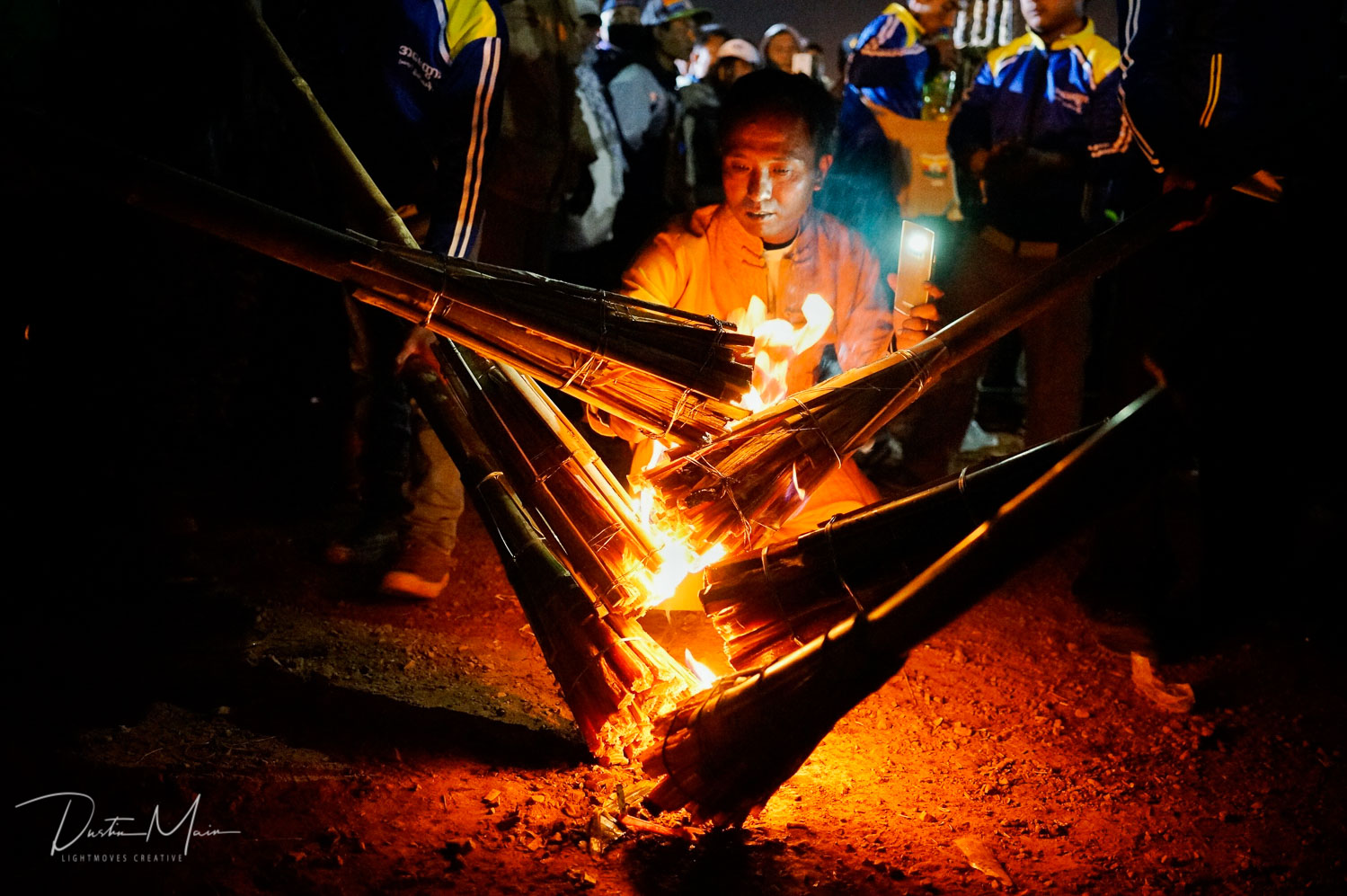
Every 30 minutes or so, a new fire balloon team will come out to great fanfare and noise. Usually it's a parade of a few vehicles: one holding the balloon and gear, one or two with the team (sometimes a couple dozen people), and another with the musicians. Even though you might just be witnessing their arrival, they've likely been out all day already, as some groups travel hours just to get here. When they arrive, they do a loop around the festival grounds singing and playing music from the backs of flatbed trucks. Soon, they are pulling onto the field, with the scores of people who have been standing around now shuffling to get out of their way.
The flattened balloon is carried out by a group of people, careful not to let it get wet if the ground is damp. Others scurry around, preparing torches, candles, or barking orders with a megaphone. Judges circle around, watching how everything is coming together, timing the team, and taking notes on a clipboard.
A little ways away, the torches are doused in fuel and lit. The men holding them quickly head over to the balloon where the team is lifting the balloon above their heads. These will be the source of the hot air to inflate the balloon.
Adorned With Lanterns:
Sein Na Pan
There are two types of fire balloons at the festival. The first is adorned in candles called Sein Na Pan, and now is a particularly important time for them. Trays of candles in colored plastic holders are brought out, with little hooks attached to them. As the balloon is inflating from the torches underneath, these folks are finding little colored tabs that have been attached to the balloon and hanging the candles from them. They must work very quickly, because as the balloon inflates and grows taller, these tabs rise higher and quickly become out of reach.
Meanwhile, a whole other group has been working on another part of the display. Off to the side, slim slices of bamboo have been fastened together in a grid approximately 10ft (3m) by 30ft (10m). Hanging from these are little colored plastic loops of which the same colored candle holders as above are attached. Younger folks duck and weave around, lighting each and every candle... and there are hundreds.
By this time (5-10 minutes later), the balloon is fully inflated. Together, the team members holding the balloon move to rotate the balloon, to show off the design. It's now that you can see the full effect the candles make on the balloon, sometimes as a small picture, Burmese script, or just an interesting design with the painting on the balloon itself as a backdrop.
The torches are now removed from below the balloon, and the "fuel" is attached in their place. This contraption, held together by pieces of rebar, is a solid fuel which makes a flame that will keep the hot air going into the balloon after it leaves the ground, like a giant candle. We're close to liftoff.
If the balloon feels like it has enough lift, the horizontal bamboo grid-of-candles is attached at one end to the bottom of the balloon. If all has gone according to plan, the balloon will be released, and the bamboo will be pulled up along with it, now held vertically. The candles attached to the loops rotate so they don't fall out, and the design of this is now visible as it floats up into the sky.
Now is the time for celebrations, as everyone points up to the balloon, dancing and cheering to the traditional music being played on the drums and cymbals.
Fire in The Sky:
Nya Mee Gyi
These balloons start off the same way, being brought out and inflated by the fire of fuel-soaked torches. Already though, you see that there is something that sets these apart. The paintings on these fire balloons are typically quite elaborate and no candles are attached to them. The work really pops as the spotlights shine on them.
And here comes what I lovingly refer to as "The Payload." A palatte-sized contraption, about 4-5ft (1.5m) tall is brought out and unwrapped. This thing is made of up to 5000 hand-made fireworks, and once the balloon is inflated, they will attach it to the bottom to take it for a ride to the sky.
They need some space below for it, so the inflated fire balloon is attached to a few ropes and released, allowing it to rise while still being tethered down. One person will hold a metal bucket on the end of a long pole from below the fire balloon to catch the dripping wax from the "fuel" so it doesn't land on the fireworks of the payload while it is attached underneath. This is also the time when people start moving away, and fast.
Once the balloon has created enough lift (or at least they think it has), the fuse is lit and the balloon is released. If all goes well, the fire balloon heads up into the sky and after 10-20 seconds, the fuse will reach the fireworks and they begin going off, shooting all around in mid air from the balloon.
There is not a straight neck in the festival grounds as everyone has their eyes transfixed on the fireworks display. It is seriously something spectacular, and something that just can't be captured on video in a way that does it any justice. Smiles brought on by awe are everywhere around as the balloon floats higher up, getting smaller in the distance as the fireworks continue to fire for 10-15 minutes.
Safety Among the Fire Balloons
But... sometimes it doesn't go according to plan.

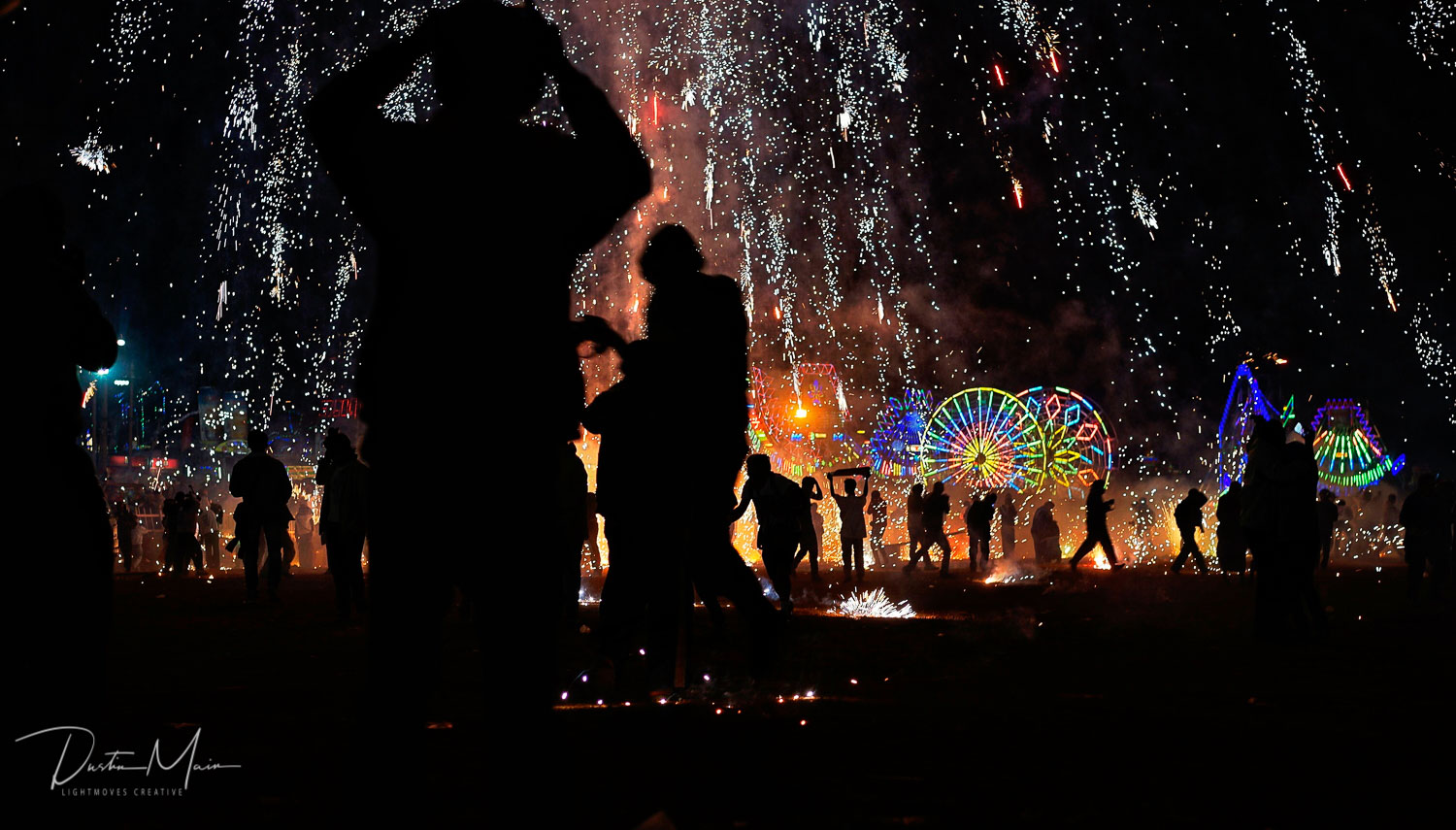
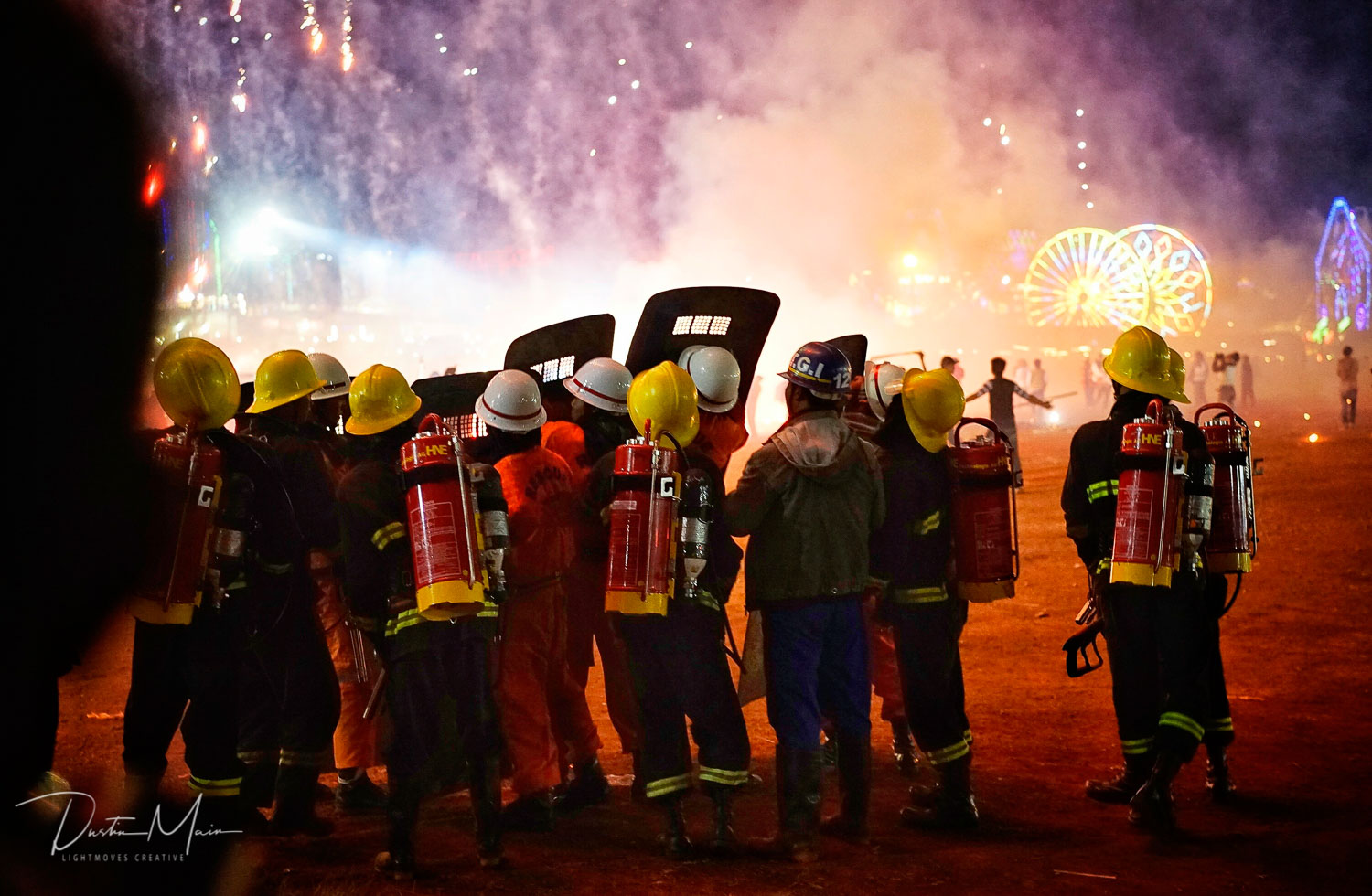
As you can imagine, launching huge balloons made of paper with a fire roaring underneath, sometimes with hundreds of candles attached and other times with thousands of fireworks, does not go according to plan. Poor weather (cool, damp air) can prevent balloons from creating enough lift, sometimes causing them to come crashing back down on the spectators below. Other times, the payload or bamboo holding the candles underneath can become detached and quickly fall to the ground. And as for those fireworks, just imagine 5000 explosions that are supposed to happen high up in the air over the course of 10-15min, instead happening in seconds at ground level. I've never been in a war zone, but the chaos the ensues as people run for cover as fireworks (hopefully) zip past your head forcing you to hit the dirt gives a bit of the feeling I'm sure.
There have been deaths at the festival grounds: about a half-dozen in the past few years along with dozens of injuries. There is a reason that this sort of event doesn't happen (pretty much) anywhere else in the world, and it's not because people don't like to watch spectacular things. It's dangerous! Mix fire, explosions from fireworks, crowds of tens of thousands, and drinking (it is a festival), and you can understand how quickly things can take a turn for the worst.
Judging the Fire Balloons
It’s easy to forget that all of this is actually part of a competition.
The judges criteria focuses on 7 main things:
Gas / smoke-filling skill
Size / Structure / Proportion
Speed
How well it goes up
How beautiful the accessories are (paintings, adornments)
Beauty of the theme
Following the criteria set out by the main committee
Prizes To Be Won
Honestly, no one is competing for the prizes. With the cost of the balloons themselves, it means that placing anywhere lower that 2nd or 3rd place means you’re out money.
Sein Na Pan (Lanterns)
1st Prize: 45 lahks (~$3000 USD)
Mee Gyi (Fireworks)
1st prize: 70 lahks (~$4500 USD)
2nd prize: 45 lahks (~$3000 USD)
3rd prize: 20 lahks (~$1300 USD)
Ayoke (Day Balloons)
1st prize: 300,000 kyats (~$200 USD)
2nd prize: 200,000 kyats (~$130 USD)
3rd prize: 100,000 kyats (~$70 USD)
What You Need To Know If You Go
If you're going to head to the Fire Balloon Festival in Taunggyi, here are some tips to make it the most enjoyable and safe experience for you.
When is the Tazaungdaing Fire Balloon Festival in 2019?
Tazaungdaing 2019 will be celebrated from November 3rd, 2019 to Nov 12th, 2019.
1) Bring a guide, and listen to them.
It is absolutely worth bringing a guide, both to help make sense of all that is happening, and to keep you safe. While your jaw is dropping in awe of what you're experiencing, they will know what to expect and be keeping an eye on the surroundings. They know how the balloons behave, where you should go, and when you need to move away.
2) Stay out of the way.
Chances are, you'll want to be getting a close-up look of the action. That's all well and good, but remember that these people have been preparing for months for this competition, and do not want you getting in their way. Oh yeah, and people are walking around with massive flaming torches. It's really important to be aware of what's happening around you.
3) Wear long pants and clothes made of natural fabrics.
It's often chilly at night up in the mountains around Taunggyi, so dress appropriately. Given that you're potentially in an environment around fire, natural fabrics are best in case a rogue firework comes your way.
4) Be aware of your surroundings
The festival grounds are busy, most nights with tens of thousands of people attending each night. When you arrive, take a look around to see the lay of the land so you know how to get back to your guide / driver in case you get split up. Know where the fire station crew is as well as the covered viewing area, and don't take anything you can't afford to lose.
5) The weather matters
It's typically not that windy this time of the year in the evenings, but the slightest breeze will dictate which direction the balloon will float. The breeze may shift often as well, so be aware of the changes.
*Never* be in the path of the balloon.
Where to Stay
While the festival itself takes place in Taunggyi, the fairly mediocre local hotels increase in price several times over for the duration of the festival, and you may want to book elsewhere.
Nyaungshwe has a good variety of hotels and is only about an hour away, which is no big deal if you're going to go for a night. You can hire a car and driver for $70-$120, and they will stay the entire evening with you until you are finished.
Other Fire Balloon Festivals in Myanmar
While the largest festival by far is in Taunggyi, you can still witness fire balloons in other parts of Myanmar.
Pyin Oo Lwin has the next largest festival, happening around the same time (full moon in the month of Tazaungmon).
The lovely hill station town of Kalaw also has its own festival which includes fire balloons and other fire-related madness. You can find out a little more in my Kalaw Travel Guide.
Shan New Year is celebrated across Shan State, with the main festivity-hosting city changing each year. This takes place about 2 weeks after the full moon in the month of Tazaungmon)
Planning on traveling to Myanmar?
Join me on an Un-Tour To Myanmar in November 2019. Click here to find out more, and join us on a beautiful journey and maybe see the fire balloons for yourself.
My 6 previous "Un-Tours to Myanmar" were amazingly memorable. Check this recap from the first tour.
